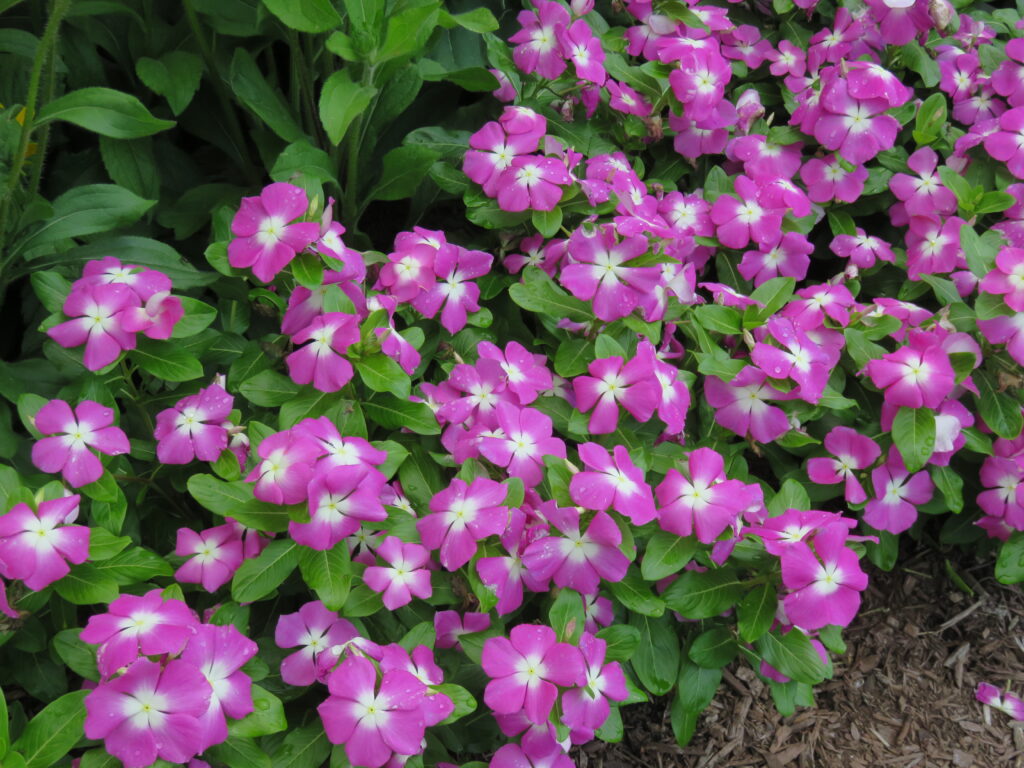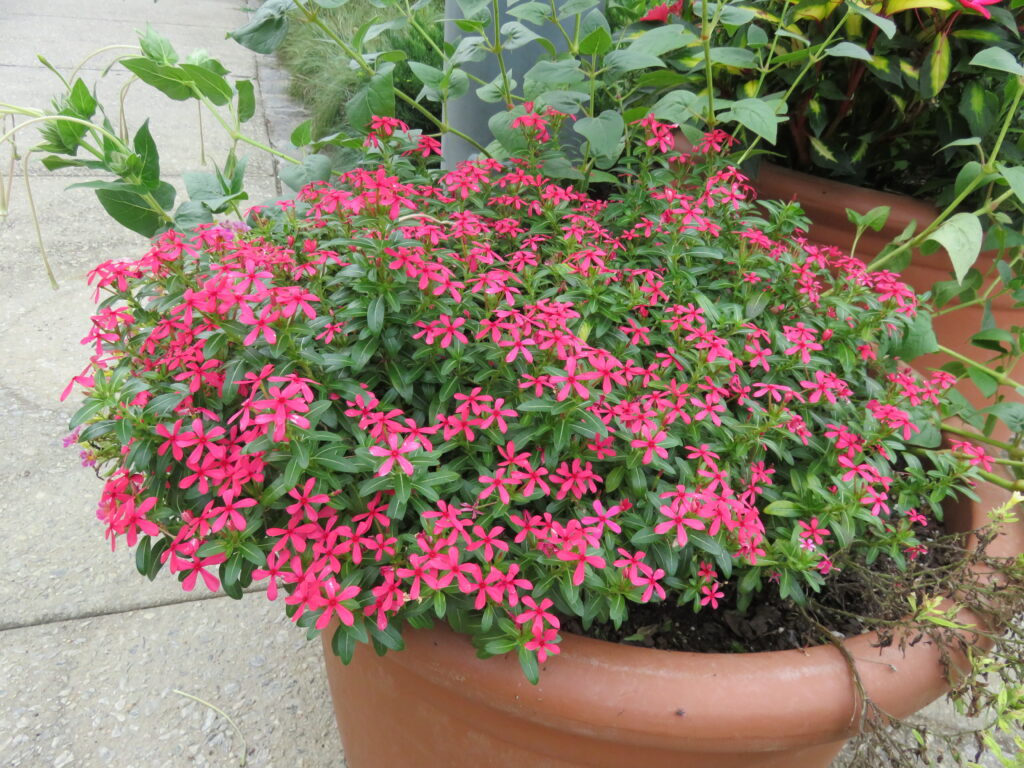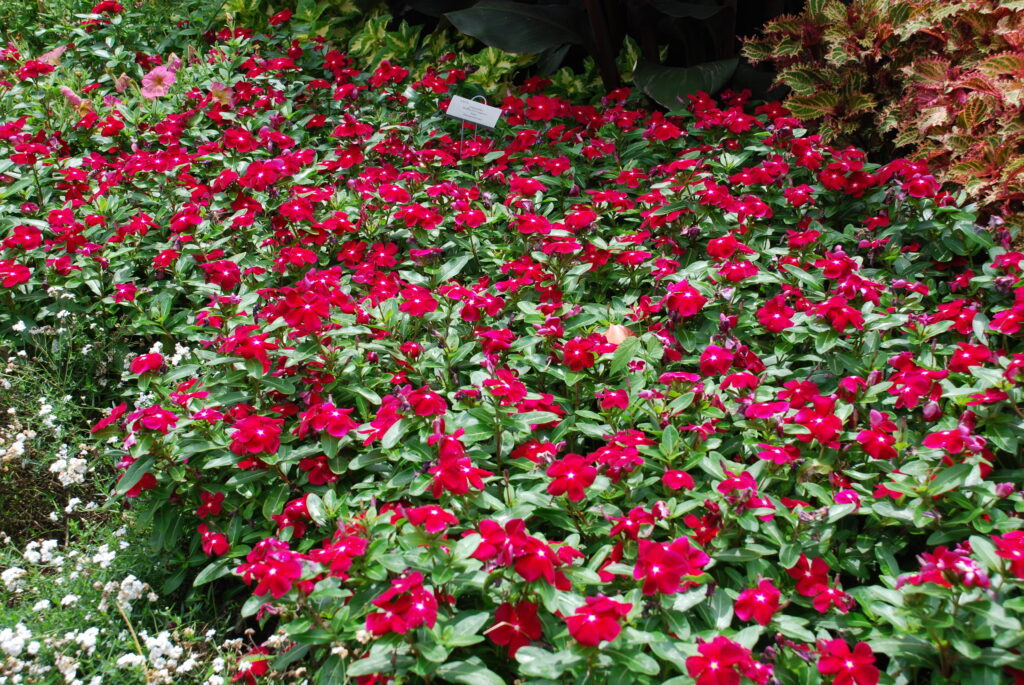
Annual vinca or periwinkle (Catharanthus roseus), aka Madagascar vincas, is a summer flowering annual popular in Southern and Midwest gardens (USDA hardiness zones 9-11). Before setting out spring transplants, wait until soils have warmed up and all threats of frost have passed. The arrival of summer heat and humidity is when vincas bloom heaviest. Vincas sparkle in containers, in flower beds, or in front borders around home and downtown buildings.
Vincas grow best in well-drained, humus-rich, loamy soil and in full or part sun. Fertilize at planting and a follow-up application in late July. Spring-planted vincas are usually established after 4 to 5 weeks and moderately drought tolerant. Vincas enjoy occasional watering during dry spells lasting 7-10 days. Overhead irrigation should be avoided.
Most modern-day cultivars grow short and compact. They vary from 6 to 18 inches in height and spread. An individual flower is composed of five flattened petals attached to a tubular base. A wide range of flower colors include lavender, red, rose, salmon, several shades of pink, and white. Some cultivars exhibit a center floral eye. Old blooms are self-cleaning and rarely messy. The 1-2-inch leaves are dark green and glossy.

The foliage is glossy dark green. Depending on the variety, fast-growing vinca is 6 to 18 inches tall with a similar spread depending on variety. Annual vinca plants bear single blooms with five petals that frequently touch or overlap from early summer until the first frost. Many varieties feature a contrasting eye. Most vincas stand upright, but low cascading varieties are also available. Modern-day vincas have an expanded color palette that includes pink, rose, and lilac shades.
New cultivars contract few, if any, serious insect or disease problems. More stress-tolerant due to hybrid vigor – tolerates heat and drought and can withstand cooler and wetter conditions compared to O.P. types. Plant vincas on an open site with good air circulation to prevent stem and root rot diseases (Phytophthora) and bacterial leaf spots. Aphids, spider mites, or powdery mildew can occur. Slugs and snails are occasional pests in wet summers.
Flowers are attractive to butterflies and are rabbit-resistant. Vincas often self-seed and re-appear in garden beds several future years. All parts of the annual vinca plant are toxic to dogs, cats, and people.
Cultivar Update: newest cultivars are faster to bloom, have superior branching, and bigger flowers. Popular vinca series are highly XDR resistant that protects against specific strains of Phytophthora soil disease. They include ‘Titan™, Cora™, Pacifica™ and Cora Cascade™. New Titan-ium™ series offers extra protection of aerial Phytophthora resistance and will be available in 2025. It grows 14-16 inches tall and will be available in 7 color choices 14-16 inches tall. Soiree Kawaii® series grow 6-8 inches high and 12-18 inches wide and flowers come in 8 colors (pink, coral, lavender-purple, red shades, white with red eyes).


 Posted in
Posted in 
